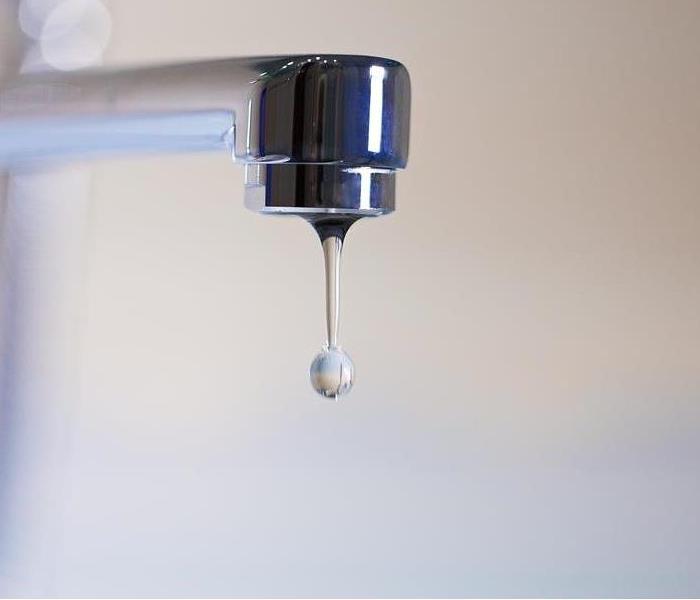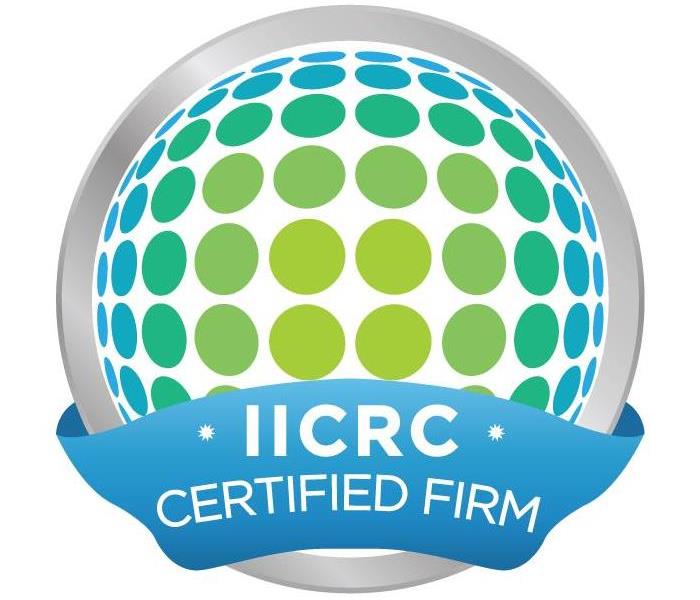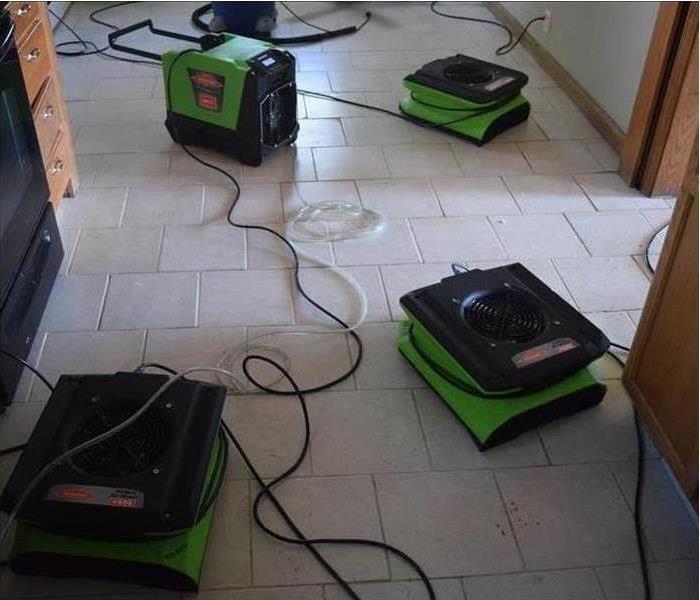Archived Blog Posts
Should I DIY Water Restoration?
2/10/2023 (Permalink)
 Should I DIY water damage? Call the professionals for your water restoration emergency
Should I DIY water damage? Call the professionals for your water restoration emergency
There is no doubt that water damage can be costly and time-consuming. Whether you're dealing with a burst pipe, sewage backup or some other kind of natural disaster, it's important to get professional help as soon as possible. Depending on the extent of damage, getting a second opinion before DIY would be a good idea.
Causes of Water Damage
Water damage can be caused by many things, including water leaks, flooding and pipe breaks. The most common type of water damage is from a pipe break that causes the inside of your property to become wet. Water damage behind the drywall can lead to extensive damage. Water will seep into the drywall and wood framing causing lots of damage. If you don't take care of water damage quickly, secondary damages can occur leaving your home in shambles.
When repairing any type of water damage it's important that you use a restoration and reconstruction company for cleanup and reconstruction to ensure the job is done right.
Unfortunately, it can also lead to issues like mold, rot and structural damage to the building itself if restoration isn't carried out correctly. The longer water is left in your home or business, the more damage it will do. The faster you act on restoring your property after a flood or leak, the less likely you are to face these long-term problems.
DIY Water Restoration
If you're thinking about taking on a DIY water restoration project, it's important to consider the costs and benefits of hiring a professional. While it can be tempting to save money by doing the work yourself, there are many reasons why hiring a professional is ideal. They know what they are doing. Water damage restoration professionals have been trained in how to properly assess and handle water damage situations. They understand the risks involved with working with electricity, mold remediation techniques, ventilation issues, etc.
They have access to specialized equipment needed for larger projects like commercial buildings where there may be multiple floors affected by flooding.
Commercial and Residential
If you've recently suffered a flood or water damage, we're here to help. Our team of trained experts provides fast and effective water damage restoration for both commercial and residential properties. We'll have your property back up and running in no time at all.
If you need help with insurance claims, we can assist with that as well! We know how frustrating it is when the process gets dragged out by an insurance company. We will make sure they pay out on their end so that you can move on with your life without worrying about money issues.
Properly Trained
If you're not trained in how to properly clean up after a flood or leaky pipe burst, it may be difficult for you to recognize signs of secondary damages. SERVPRO of Happy Valley is properly trained in the water restoration industry and have the experience and expertise to get the job done right. Give us a call at the first sign of water damage to prevent secondary damages of DIY.
How Soot Can Damage Floor Joists
12/12/2022 (Permalink)
Soot -Damaged Floor Joists
A house fire can destroy a home in a matter of minutes. But one thing that many people fail to consider is the damage caused by soot on floor joists even with minor fires. Most homeowners simply replace the damaged drywall. Meanwhile, the underlying issue — the soot — is left untreated, which can have serious consequences down the road. In this article, we'll explore how to identify signs of soot-damaged floor joists and what you should do if they're present in your home after a fire.
What is a floor joist?
Floor joists are the wooden or steel beams that support a floor. They're often 2x8 or 2x10, and they can be reinforced with steel in older homes. In newer houses, you might have concrete floor joists instead of wood.
After a fire, what happens to wood beams?
If you have a wood beam in your home, it can be damaged by a fire. Beams are made from pieces of wood that are joined together to create one piece. Damage happens when the sections of these boards come apart, or warp and twist.
While the damage may not be noticeable immediately after a fire, over time it will start to show as cracks and gaps in the beam. These gaps can let moisture into your home and lead to mold growth on walls or ceilings below them.
The best way to repair this type of damage is with something called an interlocked joist hanger system. This system uses metal brackets that help secure joists together, so they don’t separate anymore — and they also hold up better against fires than traditional wood beams do.
How does soot damage floor joists?
Soot and other forms of ash can cause damage to floor joists by weakening them, making them more susceptible to rot and expansion.
Soot can weaken floor joists by creating weak points that may eventually lead to breakage. Additionally, the residue from soot will make it easier for mold spores and fungus to grow on your floor. The fungus will attack the wood that makes up your joists and cause significant damage over time if left untreated.
Soot-damaged floor joists: how are they cleaned?
If you've got a soot-damaged floor joist, it's important to clean it up quickly and thoroughly. If you're not careful, the soot damage can spread to other parts of your home—and cleaning up after soot damage is a lot more work than it sounds like.
Fortunately, there are some relatively easy ways to clean up the wood once it's been damaged by smoke. First: don't panic! It may seem daunting right now but don't worry — we're going to walk through how exactly how this process works.
To begin with: start by applying cleaners like baking soda or vinegar directly onto the surface of the wood (don't forget that sweeping up those ashes from earlier!). You'll want a dry cloth or towel ready for this part; gently wipe away as much dirt and grime as possible.
Next: wash down all surfaces thoroughly with warm water before drying them off again with another clean cloth or towel.
Finally: seal any wooden surfaces affected by smoke damage before painting over them again with whatever color suits your mood best!
Should soot-damaged floor joists be replaced?
If your floor joists have been damaged by fire, you should replace them. The fire may have destroyed your joists, or it may have only left them soot-damaged. If you are uncertain about the structural integrity of your joists, it is important to seek out an expert opinion before attempting to repair or replace them yourself.
The decision to replace damaged floor joists depends on the amount of damage that has occurred over time since the fire took place. If there is no visible evidence of soot damage and everything seems structurally sound, then you may be able to repair rather than replace your floor joist system if:
- The flooring was not significantly damaged during the fire
- There has been no significant water damage since then.
In conclusion, soot damage can be a serious problem in your home. If you have any doubts about the structural integrity of your floor joists after a fire, then it's best to bring in an expert to do an inspection.
What is the Institute of Inspection, Cleaning and Restoration Certification?
11/30/2022 (Permalink)
 SERVPRO of Happy Valley is a IICRC Certified Firm!
SERVPRO of Happy Valley is a IICRC Certified Firm!
The IICRC (The International Institute of Cleaning and Restoration Certification) is a non-profit organization that sets standards for the cleaning and restoration industry. The purpose of these standards is to ensure that professionals in the field are properly trained and certified. IICRC certification has been proven to boost confidence among consumers, increase sales revenue for businesses, provide better service to clients and help professionals in their restoration careers.
What is an IICRC Certification?
A certificate issued by the IICRC indicates that you have received adequate training through rigorous examination procedures designed to ensure that only those individuals who meet IICRC standards may receive these credentials. Upon completion of this process, which involves passing written tests and demonstrating practical skills during hands-on assessments, you receive a certificate proclaiming your competency. The certificate shows a level of certification in a specific restoration field or all areas covered by IICRC standards—depending on which level was chosen during registration for training course(s).
How do IICRC Certifications Work?
The IICRC has made the process of obtaining certification as easy as possible for both industry professionals and students alike. First, you must attend a two-day training course at an approved location or online. You can choose from one of four levels of certification: Certified Water Damage Restoration Technician (Water), Certified Fire & Smoke Damage Restoration Technician (Fire), Certified Mold Remediation Technician (Mold), and Certified Asbestos Abatement Supervisor/Project Designer (AQP). Each level of certification requires that candidates pass a rigorous written examination covering the principles, methods, and practices in their field of expertise.
The Value of Standards and Certifications for Consumers
Many consumers and clients appreciate certifications and trained employees. They value the standards of any company they work with, especially a company that works to restore or reconstruct their homes after a disaster. That is why our team at SERVPRO of Happy Valley is IICRC certified across the board.
If you’re considering hiring a company for your cleaning needs, it’s important to know that there are standards and certifications available. IICRC certifications are some of the most respected in the industry, and we at SERVPRO of Happy Valley are proud to show our IICRC Certification badge.
Tips for Filing a Water Damage Claim
11/8/2022 (Permalink)
 Filing a water damage claim
Filing a water damage claim
The Best Ways to File a Water Damage Claim
Water damage is a nightmare. It can be difficult to prepare for and even more challenging to deal with. If you find yourself in this situation, there are some steps that you can take to help make the process less stressful on everyone involved.
Notify Your Insurance Company Right Away
Notifying your insurance company as soon as possible is the first step in filing a water damage claim. You should have already made sure that it’s covered by your policy before you start cleaning up any messes, so having to go through that process again is no fun at all.
When you call, be prepared to answer questions about what happened and how much damage has been done. Your agent or company will also want to know if there are any witnesses who can corroborate what happened. Keep your policy number handy for reference; it greatly speeds up the process of filing a claim!
Stop the Water Damage If You Can
If you can, shut off the water supply. If you're able to stop the water from flowing, it could prevent further damage and help you save on repairs. To shut off a faucet, turn the handle clockwise until it clicks. You can also use a wrench and unscrew it from its base.
If turning off your faucet didn't work—maybe because there's no handle or knob—you should try to contain as much water as possible by using towels or rags. Once you've got rid of as much liquid as possible, get in touch with your insurance professional for help filing a claim so that we can come assess the situation and get restoration underway as quickly as possible.
Document the Damage
Before you start filing a water damage claim, it's important to document the damage and try to get a sense of how much it will cost to fix everything up. For example, if there was water in your home that damaged your furniture and other items, take photos of each item with a list of damaged items—and keep track of the value of each item too! If possible, take pictures of any receipts for things you've purchased (like food or clothing) to replace some (or all) of what was ruined by floodwater. This will help bolster your case when submitting a claim later and make it easier for an adjuster from your insurance company to assess exactly how much money is owed out-of-pocket.
Reestablish Access To Your Home
- Open all doors and windows to allow the water to evaporate.
- Use fans to speed up the drying process.
Record Anything That Was Damaged and Its Value
The next step is to make a list of everything that was damaged and its value. This will help you when filing your claim with the insurance company or adjuster, because it gives them an idea of how much money you need from them to cover the damages. You should also save receipts for any items that you replace, as well as receipts for any repairs made to your home.
Never Throw Anything Away Until the Insurance Company Tells You To
When dealing with your insurance company, it's important to remember that they're not on your side. You're paying them for the service of helping you file a claim and recover from damages—not being an ally in the process. The single most important thing to remember is this: don't throw anything away until the insurance company tells you to. Even if it seems like nothing is salvageable, keep it in storage until they tell you otherwise.
Be Sure to Keep Receipts For All Expenses You Have Related To the Loss, Such as Food and Lodging
If possible, keep receipts for all expenses you have related to the loss. If you rented a hotel room or apartment after your home was damaged, include any charges you make to your credit card and write down the date that each charge was made. If you used a mobile banking app to pay for food or gas while away from home, add those purchases as well.
Steps You Can Take To Get Your Life Back on Track after Water Damage
Here are some tips on how to go about filing a water damage claim:
Make sure you’re covered. You should talk with an insurance agent before your home experiences a major loss, so that when the time comes, you’ll be ready to file a claim.
Start by taking pictures and video of the affected areas. This will help provide evidence and help in determining the extent of damage done by water.
Contact an independent adjuster or claims handler if your insurance company does not cover all costs associated with repairing your property after a flood. The adjuster will come out to assess what repairs need to be made and determine whether or not they can be completed within certain parameters set by their company's policyholder agreement.
Water damage is no laughing matter, and it’s important that you take the right steps to protect yourself and your belongings. It can be tough to deal with this kind of loss, especially if it happens when you least expect it. But don’t worry—we’ve got your back! With these tips in mind, hopefully you’ll be able to get back on track even faster than before.
How to Fix the After Affects of Burst Pipes
10/7/2022 (Permalink)
 Water Damage cleanup in State College, PA
Water Damage cleanup in State College, PA
In 5 Easy Steps, Resolve the Consequences of Bursting Pipes
Bursting pipes can cause flooding and damage in your State College, PA, business. If the water isn't swiftly dealt with, problems such as mold and structural deterioration can arise. Follow these simple steps to begin the cleanup process and prevent further damage.
1. Cut Off Electricity and Water
Cut off all water to the problem area. If you don't have access to water control, immediately contact the person who does. You should also shut off electricity to water-affected areas. But don't touch or approach electrical equipment already exposed to water, as it may produce an electric shock.
2. Hire Professional Help for Bursting Pipes
Contact commercial building restoration experts to initiate water removal and prevent secondary damage such as mold. The restoration team will assess the damage and form a plan to help restore your business to its pre-flood condition. Hiring a professional plumbing service to fix broken pipe issues is also recommended rather than attempting to fix them yourself.
3. Avoid Unsafe Areas
Broken pipes may cause flooding and water-logged ceilings or floors. Do not enter these areas, as they may collapse and cause injury.
4. Protect Furniture and Appliances
Protect furniture legs from water-damaged flooring by placing wooden blocks or aluminum foil beneath them. Electronics and water-sensitive objects such as paintings should be stored in a dry place away from flooded areas.
5. Remove the Water
Removal of water damage is best left to professionals. Enlist the services of water mitigation experts to help safely and efficiently return your business to its pre-damaged condition using pumps and other specialized equipment. While you wait for experts to arrive, use towels or mops instead of vacuums to remove water from floors. Electronics, especially those connected to an outlet, are more likely to deliver an electric shock when exposed to water.
Flooding from busted pipes may cause structural damage, odors, and even mold if not quickly resolved. Follow these guidelines to start confidently resolving the aftereffects of bursting pipes.
Do You Have An Escape Plan?
10/7/2022 (Permalink)
 How many emergency exits are there in your building?
How many emergency exits are there in your building?
How To Craft An Escape Plan
How many times throughout your day do you consider your disaster planning? Do you run through your fire prevention efforts and exit strategies? A contingency plan can be a useful tool in the event of a disaster, but if you fail to practice or review it, is it really a help? Having a fire restoration company in State College, PA, on standby is only part of the preventive strategy, it is also necessary to know how to craft an escape plan and ensure your staff and facility stay safe during a fire.
Count the exits
Eliminate obstacles
Inspect preventative systems
Get real about practice
Count the Exits
How many emergency exits are there in your building? How many exits out of each room? The minimum number of exits suggested for an evacuation plan is two for every room. People need to have multiple ways of getting to safety from their workspace. In offices, a door and a window are enough, but make sure that employees have tools needed for a safe escape.
Eliminate Obstacles
As part of the contingency plan and escape, it is crucial to keep hallways free and clear. Also, avoid placing shelving and storage in front of windows or doorways. When a fire happens, the smoke makes it nearly impossible to see. Obstacles only slow down a person's escape.
Inspect Preventative Systems
Annual and semi-annual inspections of preventative systems can help reassure you and your staff of the safety of the building. Sprinkler systems and fire extinguishers are some of the best defenses against fire, and keeping these tools functional should be a priority among business owners.
Get Real About Practice
Too many companies have escape plans, but they fail to practice. Having maps and exit signs are not enough to ensure the safety of employees. Practice regularly throughout the year.
A business contingency plan is about preparing for the worst-case. If you need help designing a plan, then contact a disaster professional for advice.


 24/7 Emergency Service
24/7 Emergency Service




